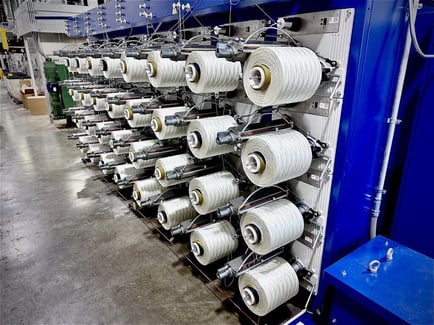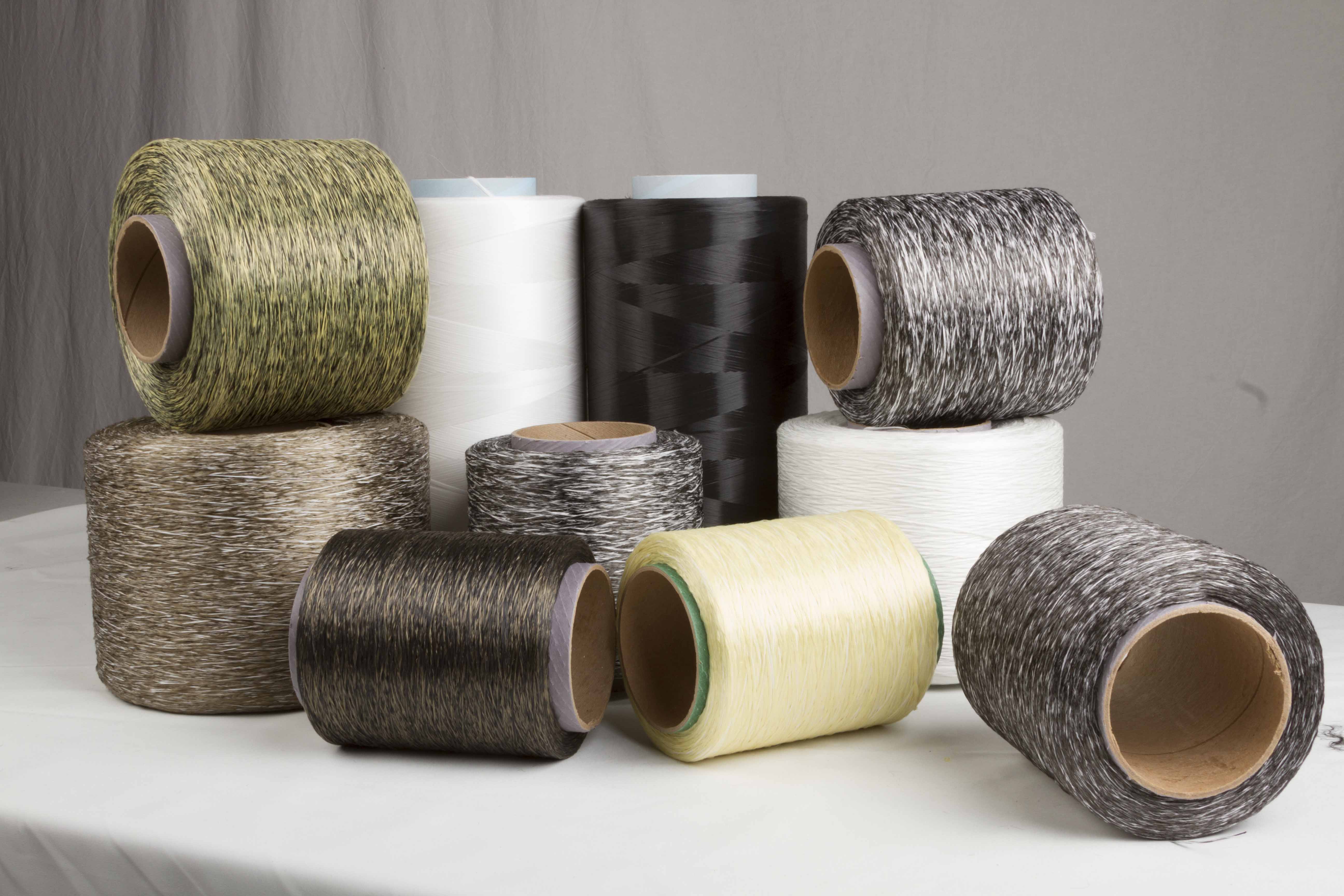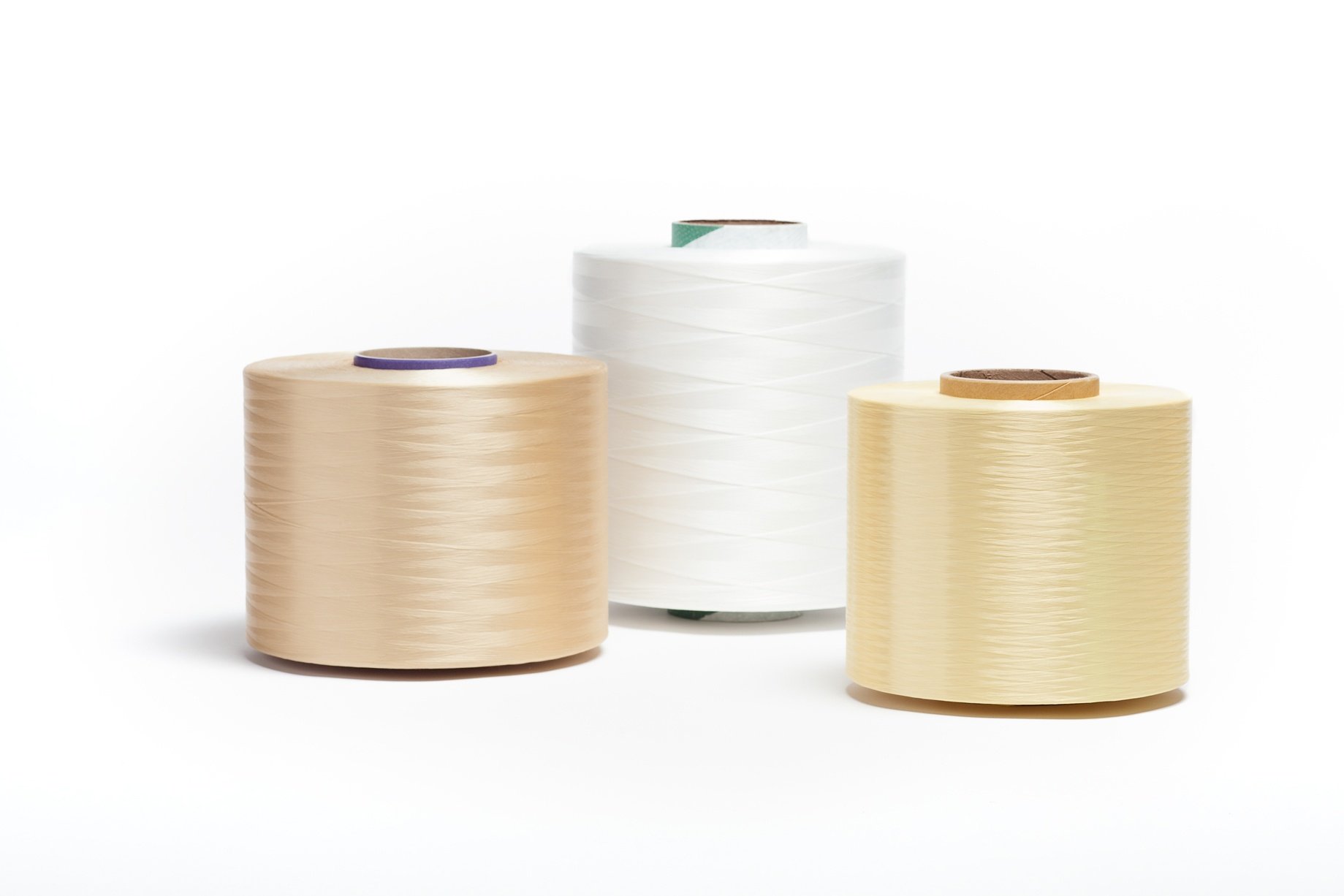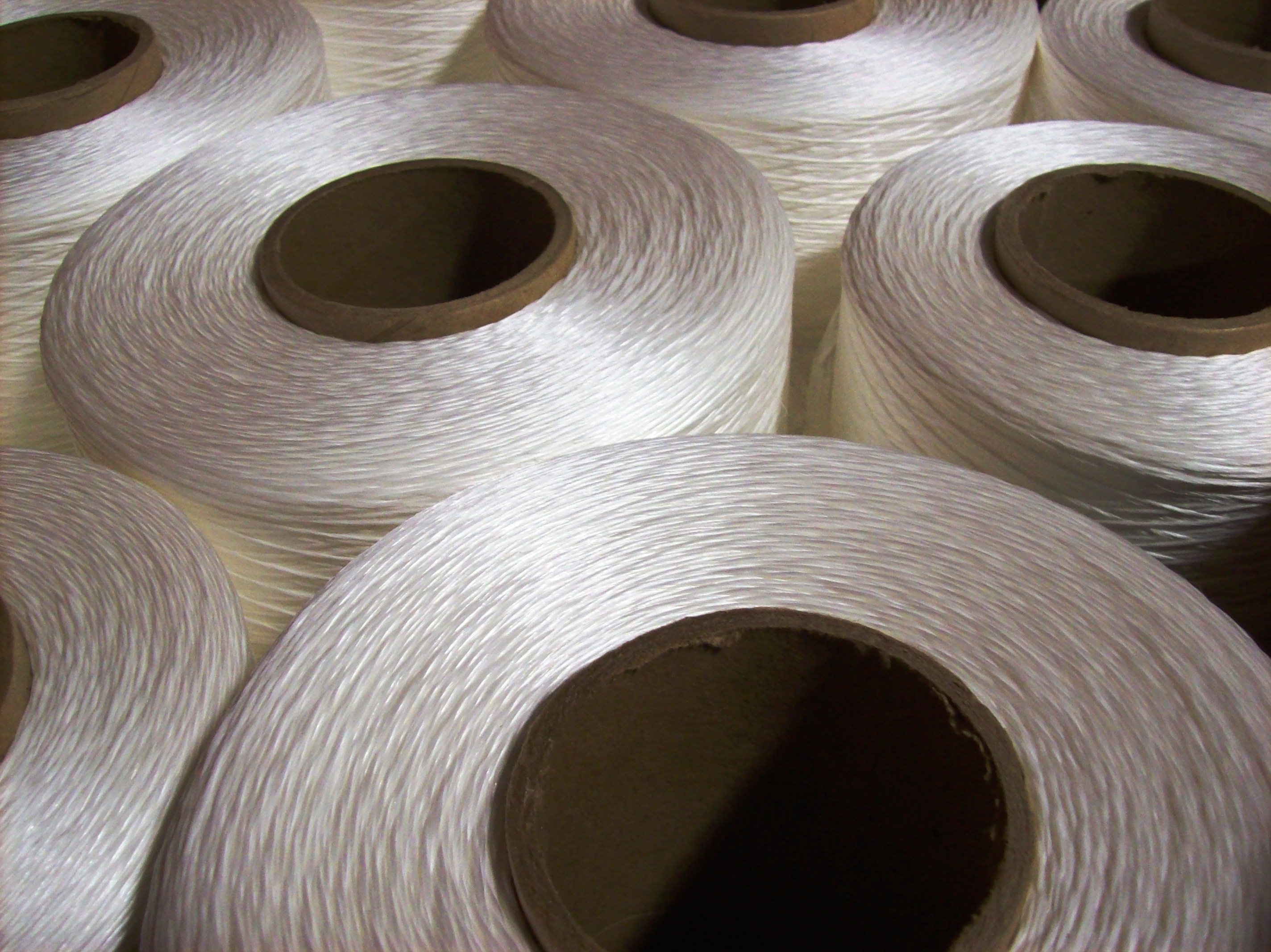As the textile industry faces rising scrutiny over chemical safety and environmental impact, one group of substances has come under particular fire: PFAS. Long valued for their ability to impart water- and stain-resistant properties, these “forever chemicals” are now being phased out across global markets. For manufacturers of high-performance yarns, this raises a critical challenge: how to maintain non-wicking functionality without PFAS.
Read morePosts by Steve Zande
PFAS-Free Non-Wicking Yarn Treatments: A Safer Alternative for High-Performance Textiles
- By Steve Zande
- 06/27/25
- Wire and Cable, Wicking Test, Waterblocking, Industrial Yarn, Polyester
- 0 Comments
- By Steve Zande
- 04/23/25
- 0 Comments
Recent developments in U.S. trade policy have once again put a spotlight on the vulnerability of supply chains that rely heavily on imported materials—particularly from China. With proposed tariff hikes targeting a wide range of goods, including industrial textiles and raw materials, manufacturers are facing increased pressure to find reliable, cost-effective alternatives closer to home.
Read more- By Steve Zande
- 12/13/24
- 0 Comments
Polyester yarns are fundamental to the performance and longevity of a wide range of industrial products. From hose reinforcement to binder yarns for fiber optic cables, tire cords, and industrial fabrics, the success of these applications hinges on achieving the right balance of mechanical properties. Among these critical properties, break strength, elongation, and shrinkage play pivotal roles. Each property serves a distinct purpose, and optimizing one can have a cascading effect on the others.
Read more- By Steve Zande
- 11/15/24
- 0 Comments
 Polyester is a cornerstone material in industrial applications, valued for its adaptability and mechanical properties. Products like hose reinforcement, binder yarns for fiber optic cables, tire cords, and industrial fabrics depend on polyester's ability to perform reliably under demanding conditions. Among the most critical properties for these uses are elongation, shrinkage, and break strength. These characteristics are interconnected, and adjustments to one can significantly influence the others.
Read more
Polyester is a cornerstone material in industrial applications, valued for its adaptability and mechanical properties. Products like hose reinforcement, binder yarns for fiber optic cables, tire cords, and industrial fabrics depend on polyester's ability to perform reliably under demanding conditions. Among the most critical properties for these uses are elongation, shrinkage, and break strength. These characteristics are interconnected, and adjustments to one can significantly influence the others.
Read more
- By Steve Zande
- 09/05/23
- 0 Comments
The recent news of Alfa Group's decision to close its filament polyester production plant in Mexico has sent shockwaves throughout the industry. Companies that once relied on Akra's products are now faced with the daunting task of finding suitable alternatives. While many high tenacity polyester fibers can be readily replaced, the Akra Type 161 presents a unique challenge due to its distinct physical properties.
Read more- By Steve Zande
- 09/30/19
- 0 Comments
We sat down with Jen Hanna, the director of business development at Innegra™, to discuss the benefits of Innegra™ and how it can be put to the best use in a variety of applications. It’s a relatively new material to the market and many Service Thread clients have requested more information about it.
Read more- By Steve Zande
- 05/01/19
- 0 Comments
Trade tensions between the E.U. and the U.S. have continued to escalate after a preliminary list of $11 billion in tariffs was announced in April 2019. In response to European subsidies to Airbus and a subsequent World Trade Organization (WTO) ruling, U.S. textile importers have faced a duty of up to 100% on certain materials.
Read more- By Steve Zande
- 04/23/19
- 1 Comment
In our previous article, What is Innegra™?, we looked at the basic properties of this relatively new fiber and some common uses for it. Now we’d like to share some tips for deciding whether it’s right for your purpose.
Read more- By Steve Zande
- 04/17/19
- 0 Comments
Are you familiar with Innegra™? It’s a new fiber on the market not yet well known among buyers and manufacturers of fiber products. But it has a wide variety of uses, from innovative aerospace materials to extreme sports equipment.
Read more- By Steve Zande
- 04/08/19
- 0 Comments
The Berry Amendment was passed in 1941 to promote the use of U.S.-sourced materials in military uses. It primarily covers tools, food, and textiles for use at home and abroad in military operations. The amendment outlines specific rules that govern how these goods are produced.
Read moreSteve Zande

Recent Posts
PFAS-Free Non-Wicking Yarn Treatments: A Safer Alternative for High-Performance Textiles
- By Steve Zande
- 06/27/25
- Wire and Cable, Wicking Test, Waterblocking, Industrial Yarn, Polyester
- 0 Comments
As the textile industry faces rising scrutiny over chemical safety and environmental impact, one group of substances has come under particular fire: PFAS. Long valued for their ability to impart water- and stain-resistant properties, these “forever chemicals” are now being phased out across global markets. For manufacturers of high-performance yarns, this raises a critical challenge: how to maintain non-wicking functionality without PFAS.
Read moreOlder Posts
Navigating Tariffs: A Domestic Solution for Textile Manufacturers
- By Steve Zande
- 04/23/25
- 0 Comments
Recent developments in U.S. trade policy have once again put a spotlight on the vulnerability of supply chains that rely heavily on imported materials—particularly from China. With proposed tariff hikes targeting a wide range of goods, including industrial textiles and raw materials, manufacturers are facing increased pressure to find reliable, cost-effective alternatives closer to home.
Read moreBreak Strength, Elongation, and Shrinkage in Polyester for Industrial Markets
- By Steve Zande
- 12/13/24
- 0 Comments
Polyester yarns are fundamental to the performance and longevity of a wide range of industrial products. From hose reinforcement to binder yarns for fiber optic cables, tire cords, and industrial fabrics, the success of these applications hinges on achieving the right balance of mechanical properties. Among these critical properties, break strength, elongation, and shrinkage play pivotal roles. Each property serves a distinct purpose, and optimizing one can have a cascading effect on the others.
Read moreThe Relationship Between Elongation, Shrinkage, and Break Strength in Polyester Yarns
- By Steve Zande
- 11/15/24
- 0 Comments
 Polyester is a cornerstone material in industrial applications, valued for its adaptability and mechanical properties. Products like hose reinforcement, binder yarns for fiber optic cables, tire cords, and industrial fabrics depend on polyester's ability to perform reliably under demanding conditions. Among the most critical properties for these uses are elongation, shrinkage, and break strength. These characteristics are interconnected, and adjustments to one can significantly influence the others.
Read more
Polyester is a cornerstone material in industrial applications, valued for its adaptability and mechanical properties. Products like hose reinforcement, binder yarns for fiber optic cables, tire cords, and industrial fabrics depend on polyester's ability to perform reliably under demanding conditions. Among the most critical properties for these uses are elongation, shrinkage, and break strength. These characteristics are interconnected, and adjustments to one can significantly influence the others.
Read more
Exploring Alternatives to Akra 161 Polyester: Navigating a Changing Landscape
- By Steve Zande
- 09/05/23
- 0 Comments
The recent news of Alfa Group's decision to close its filament polyester production plant in Mexico has sent shockwaves throughout the industry. Companies that once relied on Akra's products are now faced with the daunting task of finding suitable alternatives. While many high tenacity polyester fibers can be readily replaced, the Akra Type 161 presents a unique challenge due to its distinct physical properties.
Read moreWe sat down with Jen Hanna, the director of business development at Innegra™, to discuss the benefits of Innegra™ and how it can be put to the best use in a variety of applications. It’s a relatively new material to the market and many Service Thread clients have requested more information about it.
Read moreWhat Do The Latest U.S. Trade Committee Hearings Mean for the Textile Industry?
- By Steve Zande
- 05/01/19
- 0 Comments
Trade tensions between the E.U. and the U.S. have continued to escalate after a preliminary list of $11 billion in tariffs was announced in April 2019. In response to European subsidies to Airbus and a subsequent World Trade Organization (WTO) ruling, U.S. textile importers have faced a duty of up to 100% on certain materials.
Read moreWhen to Choose Innegra™
- By Steve Zande
- 04/23/19
- 1 Comment
In our previous article, What is Innegra™?, we looked at the basic properties of this relatively new fiber and some common uses for it. Now we’d like to share some tips for deciding whether it’s right for your purpose.
Read moreWhat is Innegra™?
- By Steve Zande
- 04/17/19
- 0 Comments
Are you familiar with Innegra™? It’s a new fiber on the market not yet well known among buyers and manufacturers of fiber products. But it has a wide variety of uses, from innovative aerospace materials to extreme sports equipment.
Read moreUnderstanding the Berry Amendment and its Exceptions Related to Textiles and Sewing
- By Steve Zande
- 04/08/19
- 0 Comments
The Berry Amendment was passed in 1941 to promote the use of U.S.-sourced materials in military uses. It primarily covers tools, food, and textiles for use at home and abroad in military operations. The amendment outlines specific rules that govern how these goods are produced.
Read more







